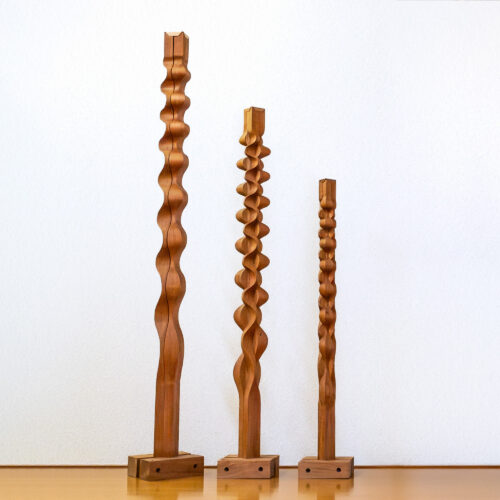The idea came to Alden B. Dow as he sat quietly in an auditorium, watching the conductor and musicians performing in concert. He wondered if there might be a way to enhance the enjoyment of a musical performance by adding color, light, and movement to the experience. He began experimenting in the Game Room of his home, putting up a curtain of translucent polyethylene made by the Dow Chemical Company. He watched his children and their friends play behind the screen and cast shadows while he added different colored lights.
From the little stage of the Game Room, he took his yet unnamed invention to the larger auditorium of the new Grace A. Dow Library in Midland. In March of 1956, the audience attending “Impressionism in Music” heard the music of Debussy, Shostakovitch, and others played by pianist Leo Podolsky, and watched as ballet dancers performed in shadow behind a 40-foot wide polyethylene screen. Mr. Dow was at a control panel off stage, synchronizing the lights and mixing colors with the music and the dancers’ movements.
After inviting suggestions from the public, Mr. Dow named his new art form Somnophonics or Dream Sound. As he explained, “Music becomes a picture painted in sound; a picture becomes music played in color…The screen facilitates the blending of various mediums, each complementing rather than competing with the other.”
A second Somnophonics production, “A Chronicle for Christmas,” followed in December 1956. It was a more elaborate undertaking, featuring an original script written in blank verse, the music of Bach and Bartok, and the talents of many community members, on stage and behind the scenes. A review in the Saginaw News called it “an exciting and intensely provocative experience.”
National newspapers and magazines published stories about the new art form, which inspired many people to write to Mr. Dow for advice in setting up their own Somnophonics productions. In November 1959 a third concert incorporating Dream Sound, “Piano Magic,” was held at the Grace A. Dow Library. Scripts and notes for two other productions exist, but unfortunately there is no record of them ever having been performed.




















